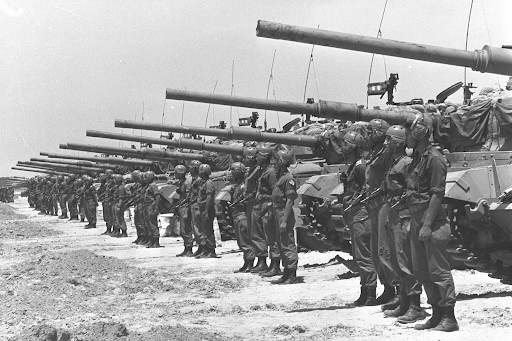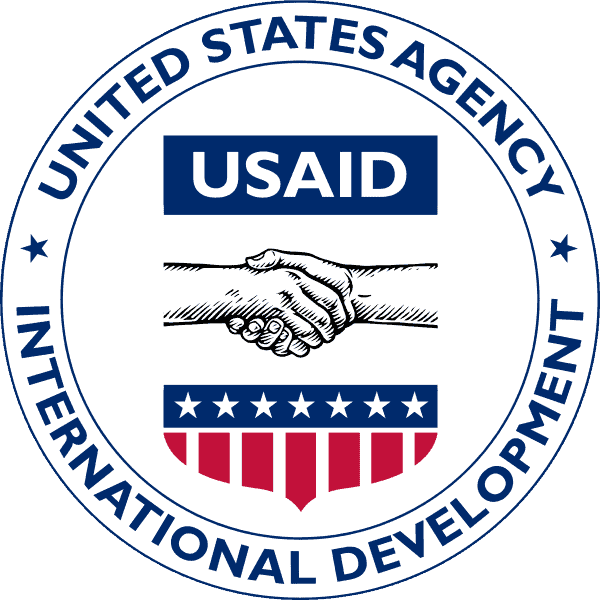As a first-tour USAID loan officer in Amman, Jordan, Anthony Schwarzwalder observed first-hand the economic aftermath of the 1967 Arab-Israeli War. Following Israel’s capture of East Jerusalem, a U.S. contractor’s construction equipment, valued at $1 million, sat stranded and in limbo at the Jerusalem airport. Recovering the equipment would require a creative effort, as the contractor faced threats of blacklisting from other Arab countries for dealing directly with the Israelis. The U.S. government stepped in diplomatically, issued an ultimatum against Israel, and the abandoned machinery ultimately inspired the first real communication between Israel and Jordan since the West Bank changed hands. With the Jordan River as the new boundary and scene of the exchange, the U.S. government and Schwarzwalder facilitated this remarkable interaction.
The 1967 Arab-Israeli War between Israel and Egypt, Jordan, and Syria lasted just six days but the devastating effects could be seen decades later. Aggravated by tensions over shipping through the Straits of Tiran, Israel launched a surprise preemptive attack against Egypt’s airfields. This high-stakes gamble paid off. Israel was able to cripple the militaries of its opponents, cause heavy casualties, and seize large stretches of land in just a few days. Ongoing economic activity in the new Israeli occupied territory of the West Bank halted as the displacement of large numbers of the Arab population led to chaos and uncertainty.
Anthony Schwarzwalder’s first assignment was Amman, Jordan. He went on to serve as director of the Office of Relief and Rehabilitation in Pakistan where he dealt with issues such as the 1970 Bangladesh Cyclone. From 1979 to 1984 he served as USAID mission director in the Philippines. After his retirement in 1984, Schwarzwalder worked extensively with a variety of nonprofits.
Read ’s Anthony Schwarzwalder’s full oral history HERE.
Drafted by Wendy Erickson.
Excerpts:
The Airport and the 1967 War: At that point, Jordan was politically calm. The Israeli situation seemed to be relatively manageable. . . . The airport in Jerusalem, which served Jordan as well, was really shot. There were huge dips, craters. We went out and watched Egyptian Air land. We were standing at one end of the runway and it went completely out of our sight of vision as it went down and came up. It was sort of bouncing from side to side. So, one project was to upgrade the airport.
****
Then the war came, and the Israelis took the West Bank and flew over and shot up a lot of the construction equipment on the East Ghor Canal. The projects there on the West Bank were really totally in limbo. I had an opportunity to be really a very small bit player because these were my projects, but it was a very interesting negotiation that went on.
“If he had negotiated to get his equipment off of the West Bank, he would have been blacklisted throughout all the other Arab countries.”
The U.S. Response to Threats of Blackmail: There was a time when the Jordanians and the Israelis were not talking at all. But the man who was working on the airport in Jerusalem was an American contractor who had these guarantees against war and so forth with OPIC (Overseas Private Investment Corporation). So, he had about $1 million of equipment, which in that time was significant. . . . This was sitting on the runway in Jerusalem when the war started and the Israelis swept through.
“If you don’t return this equipment, we’ll deduct your foreign aid program by the amount of the equipment, which is $1 million.”
He came to the embassy in Amman and said, “I cannot negotiate with the Israelis because of a blacklisting program that the Arabs have.” If he had negotiated to get his equipment off of the West Bank, he would have been blacklisted throughout all the other Arab countries and he had business going on. [T]he U.S. government went to the Israeli government and said, “If you don’t return this equipment, we’ll deduct your foreign aid program by the amount of the equipment, which is $1 million.”
So, the Israelis said, “Fine, we’ll return this equipment.” But by then, the military had used a lot of it and some of it was even up in northern Israel. Some of it had been used to, regrettably, and it all had the AID hand clasps, knock down Arab housing to clear a way to the Wailing Wall.
“The Israeli army would drive the equipment down, stop it right in the Jordan River. . . .”
Just Drive It Through the River: [W]hat they decided to do was that the army would round up the equipment and they would drive it through the West Bank. Of course, you have the Jordan River, which is the boundary, and the hills on both sides are quite dramatic. . . . The Israeli army would drive the equipment down, stop it right in the Jordan River, which was shallow enough, leave the keys in, march back up to the hills on the West Bank, 20 minutes would pass, the Jordanian army would march down, turn on the keys, and drive the equipment back to Amman. So, that was the first even tacit relationship that they had after the 1967 War, over this AID equipment.
TABLE OF CONTENTS HIGHLIGHTS
Education
BA of Arts in Government, Wesleyan University 1957–1961
MA of Public Health, John Hopkins University 1976–1977
Joined USAID 1978
Amman, Jordan—Loan Officer 1966–1968
Islamabad, Pakistan—First Director of Office of Relief and Rehabilitation 1969–1974
Washington, D.C.—Technical Assistance Bureau, Officer Supervisor 1977–1979
Manila, Philippines—USAID Mission Director 1979–1984
Retirement 1984
Office of Foreign Disaster Assistance
HIV/AIDS Prevention Program



